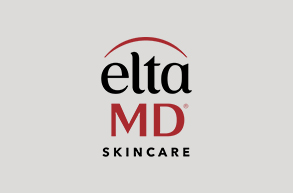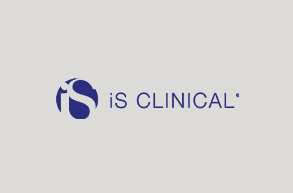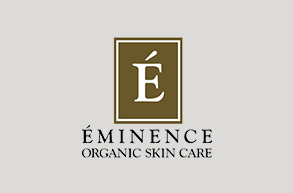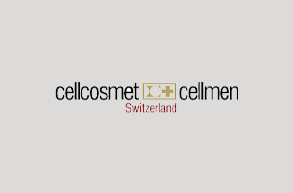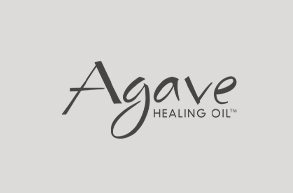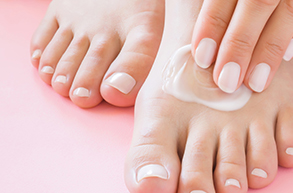Dermava Guide To Skincare Ingredient Screening
How we determine a skincare product is a good fit for your health profile.

Updated June 20, 2023
When Dermava was created, we had one ultimate goal in mind: to supply the best skincare products for each, unique person.
We have set out to eliminate the guesswork in product selection by leveraging your data and our intelligent ingredient algorithms to make it easy to understand whether a product is right for you.
Product selections are curated specifically for you by our team of licensed estheticians and virtual dermatological consultants.
How do we do this?
We screen thousands of products with tens of thousands of ingredients against over 93+ health conflicts to identify if that product is right for you. We instantly cross reference them with your individual health profile and display it right on the product page and our estheticians use it to make educated decisions when building the perfect routine.
Our second goal was to invest in transparency. To that end, we are compiling this guide to breakdown exactly what ingredients we screened for and why. We will explain the common risk factors with each ingredient and offer additional information, like when to consult your doctor and other considerations.
While we looked at many ingredients, please note that there are thousands of ingredients used to create products and that this list is not exhaustive. If you have any recommendations you want to suggest for us to screen and include in our findings, please let us know.
Table of Contents
Skincare While Pregnant or Breastfeeding
- Retinol / Vitamin A While Pregnant
- Benzoyl Peroxide / Benzoperoxide
- Hydroquinone
- Salicylic Acid
- Chemical Sunscreens
- Diindolylmethane
- Dihydroxyacetone
- Formaldehyde
- Caffeine
- Alpha Hydroxy Acids
- Phthalates
- Parabens
- Additional Notes
Allergies Or Sensitivities In Skincare
- Fruit Enzymes
- Aspirin
- Dyes
- Preservatives
- Fragrance
- Gluten
- Lactose
- Latex
- Lavender Oil
- Parabens
- Peanuts
- Peppermint Oil
- Retinol / Vitamin A Allergy
- Rosemary Leaf Oil
- Silicone
- Soy
- Sulfates
- Talc
- Tree Nuts
- Phthalates
- Metals
Skincare While Having Diabetes
Skincare While Pregnant or Breastfeeding
As joyous a time it is to be preparing for your baby or breastfeeding let’s face it, it is extremely stressful and overwhelming. Your choice in skincare products should be easy, but it can be hard to know just what is and is not okay for you and your child.
Below is a list of the ingredients we screened for that should be avoided by those who are pregnant or breastfeeding.
Retinol / Vitamin A While Pregnant
Why: Evidence suggests that Retinol may lead to birth defects or other serious life-long health problems for your baby.
Other names that may appear on a product ingredient list:
- Retinoic Acid
- Retinal
- All Trans Retinol
- Vitamin A
- Vitamin A1
- Retinal
- Retinyl Aldehyde
- Vitamin A Aldehyde
- Retinaldehyde
- Retinyl Palmitate
- Vitamin A Palmitate
- Retinyl Propionate
- Retinoid
- Hydroxypinacolone retinoate
- Isotretinoin (or 13-cis-retinoic acid)
- Alitretinoin (or 9-cis-retinoic acid)
- Tazarotene
While there is ongoing research on the effects of Retinol during pregnancy or breastfeeding, risk factors are not 100% clear. Until there is more data collected and experiments done, it is highly recommended to avoid retinol while pregnant or breastfeeding.
Benzoyl Peroxide / Benzoperoxide
Why: This is a common ingredient used for acne treatments. While typically prescribed in high doses by dermatologists, small amounts can be found in OTC products. Benzoyl peroxide is commonly used for acne and can kill acne causing bacteria, control excess oils and remove dead skin cells.
While some doctors may allow for use of benzoyl peroxide we recognize that the FDA classifies this ingredient in category 3, meaning it is generally safe for pregnancy but more data is needed to be 100% sure. For that reason we look out for it and encourage those who may want to use this ingredient while pregnant talk to your doctor first.
Hydroquinone
Why: This has a higher absorption rate into the skin and can affect the health of the baby.
Other names that may appear on a product ingredient list:
- Benzene-1,4-diol
- Quinol
Salicylic Acid
Why: Salicylic Acid is often used in exfoliation products and is typically safe to use topically only in no more than 2%. You should always consult your doctor before using a product with this ingredient. For this reason, we have screened for it and included it here.
Other names that may appear on a product ingredient list:
- Willow Bark
- Salix Alba (Willow)
- Bark Extract
Chemical Sunscreens
Why: Chemical sunscreens are known to interfere with the baby’s nervous system development and may be linked to low birth-weights.
Sunscreen Ingredients that should be avoided:
- Oxybenzone
- Avobenzone
- Homosalate
- Octocrylene
- Octinoxate
Dihydroxyacetone
Why: This is an ingredient usually found in self-tanning products. This can be unsafe if inhaled during a tanning session. However, it is safe if used topically but because of the inherent inhalation risk with some products we included it here.
Other names that may appear on a product ingredient list:
- DHA
- Glycerone
- Dihydroxy-2-propanone
Diindolylmethane
Why: This is a phytonutrient found in vegetables like broccoli, cabbage, and more. While it does have positive effects for skincare, it can have potential hormonal effects and should not be used by anyone who is prenant, planning to be, or breastfeeding.
Formaldehyde
Why: It may remind you of dissecting a frog in high school, but believe it or not this is an ingredient often found in hair products and nail polish. Formaldehyde has been linked to fertility issues and miscarriage and should be avoided.
There are preservative ingredients in products that actually release formaldehyde, so the following should also be avoided:
- Quaternium-15
- DMDM hydantoin
- imidazolidinyl urea
- Diazolidinyl urea
Caffeine
Why: If you're pregnant or breastfeeding, you are likely already aware that you should limit caffeine to 200mg per day -- this includes your skincare products!
While products containing less than 5% caffeine should be safe to use, you should always consult your doctor before using a product with this ingredient. For this reason, we have screened for it and included it here.
Alpha Hydroxy Acids
Why: AHAs are used in exfoliation products and because our skin is highly sensitive during pregnancy, any product with AHAs higher than 10% should be avoided. While using a product with less than that amount should be safe, you should always consult your doctor before using a product with this ingredient. For this reason, we have screened for it and included it here.
Common AHAs that we screened for are:
- Glycolic Acid, also known as:
- 2-Hydroxyethanoic Acid
- Acide Alpha-Hydroxyéthanoïque
- Acide Glycolique
- Acide Hydroxyacétique
- Alpha-Hydroxyethanoic Acid
- Hydroxyacetic Acid
- Lactic Acid
- Malic Acid
- Tartaric Acid
- Citric Acid
- Mandelic Acid
- Pumpkin
- Strawberry
Phthalates
Why: Phthalates are often used in cosmetic products as a fragrance. Products containing phthalates may cause contact dermatitis in those who are sensitive. They are also recognized as endocrine disruptors, which interfere with the body’s hormonal system.
Ingredients that we screened for are:
- Fragrance (Parfum)
- Flavor (Aroma)
- Dibutylphthalate (DBP)
- Dimethylphthalate (DMP)
- Diethylphthalate (DEP)
Parabens
Why: Parabens are often used in skincare products as a preservative, preventing the growth of mold and bacteria in products like moisturizers, creams, and sunscreens. Parabens are known to cause contact dermatitis in sensitive individuals.
Ingredients that we screened for are:
- Propylparaben
- Methylparaben
- Butylparaben
- Ethylparaben
- Isobutylparaben
Additional Notes
In addition to what we screen for you also don't want to do any of the following:
Cosmetic treatments such as Botox, fillers and lasers. You do not want to inject anything into you when you are pregnant.
Microcurrent machines. These send electric currents into the body; not great to do that while pregnant.
Exfoliating treatments such as microdermabrasion, peels or exfoliation masks. Skin is highly sensitive during pregnancy. This would just cause adverse reactions; it's not necessarily unsafe. Chemical peels may make pigmentation worse during pregnancy, might not improve what you are targeting and could contain ingredients that are not recommended for pregnancy at professional percentages.
Products containing high concentrations of fragrances and essential oils, such as bath bombs and scented lotions. When pregnant you are sensitive to smells, and in general you want to avoid fragrance because there is a chance of contact dermatitis.
Allergies & Sensitivities In Skincare
Food allergens and skin allergies can cause different reactions. Skin allergies may cause contact dermatitis which is a topical reaction, however food allergens can cause contact dermatitis along with other more serious side effects.
Allergies occur when your body's immune system reacts to foreign substances. Because we are invested in topical products and their ingredients, it's important to mention and safe to assume that if an individual comes in contact with a known allergen in a skincare product, they can experience allergic contact dermatitis. Symptoms include redness, swelling, itching, and hives.
Further reading: https://www.fda.gov/cosmetics/cosmetic-ingredients/allergens-cosmetics
Fruit Enzymes
Why: These are used as a mild alternative to exfoliating acids AHA and BHA. Usually more suitable for pregnancy and sensitive skin types in low amounts.
Common Fruit Enzyme ingredients that we screened for are:
- Strawberry
- Bromelain (found in pineapple juice and stems)
- Pumpkin (has high levels of AHA)
- Pepsin (found in papaya)
- Banana (associated with latex allergy)
- Ficin (found in figs)
- Actinidin (found in kiwi, pineapple, mango, banana, and papaya)
Aspirin
Why: Having allergic reactions to Aspirin is not uncommon and there are several common ingredients used in skincare products that might conflict with an Aspirin allergy.
Ingredients that we screened for are:
- Salicylic Acid
- Willow Bark Extract
- Salix Alba (Willow) Bark Extract
Dyes
Why: Dyes used in skincare products, typically in cosmetics, are known to cause contact dermatitis.
Ingredients that we screened for are:
- Blue 1 (CI 42090)
- Yellow 5 (CI 42090)
- Red 4 (CI 14700)
- Red 33 (CI 14700)
- Violet 2
- Iron Oxides (CI 77491, CI 77492)
- Bismuth Oxychloride (CI 77163)
- Iron Oxides (CI 77489, CI 77499)
- Ultramarines (CI 77007)
- Chromium Oxide Greens (CI 77288)
Preservatives
Why: There are several preservative ingredients that are recognized by the FDA as a common allergy found in cosmetic products.
Ingredients that we screened for are:
- Methylisothiazolinone (MIT)
- Methylchloroisothiazolinone (CMIT)
- Bronopol (2-bromo-2-nitropropane-1,3-diol)
- 5-bromo-5-nitro-1,3-dioxane
- Diazolidinyl urea
- DMDM hydantoin (1,3-dimethylol-5,5-dimethylhydantoin)
- Imidazolidinyl urea
- Sodium hydroxymethylglycinate
- Quaternium-15 (Dowicil 200; N-(3-chloroallyl) hexaminium chloride)
Fragrance
Why: We’ve all gotten a tickle in our nose from a strong perfume or product, but for some they can cause contact dermatitis.
Ingredients that we screened for are:
- Fragrance (Parfum)
- FLAVOR (AROMA) [NATURAL]
- Amyl cinnamal
- Amylcinnamyl alcohol
- Benzyl alcohol
- Benzyl salicylate
- Cinnamyl alcohol
- Cinnamal
- Citral
- Coumarin
- Eugenol
- Geraniol ( or hydro geraniol ),
- Hydroxycitronellal (HICC), (also known as Lyral)
- Hydroxymethylpentyl-cyclohexenecarboxaldehyde
- Isoeugenol
The following are less frequently reported and thus less documented as consumer allergens, but may cause reactions in some people and have been included:
- Anisyl alcohol
- Benzyl benzoate
- Benzyl cinnamate
- Citronellol
- Farnesol
- Hexyl cinnamaldehyde
- Lilial
- d-Limonene ( or terpenes )
- Linalool ( or terpenes )
- Methyl heptine carbonate
- 3-Methyl-4-(2,6,6-trimethyl-2-cyclohexen-1-yl)-3-buten-2-one
- Oak moss
- Tree moss
Gluten
Why: Having a gluten allergy or celiac disease is becoming more common as understanding of gluten intolerance broadens. Gluten ingredients are often found in skincare products. You should know that most often a product which contains gluten is typically unsafe for those with gluten allergies when it is ingested.
Speaking on BeyondCeliac.org, Dr. Alessio Fasano, Medical Director of the Center for Celiac Research, University of Maryland states, “If you have celiac disease (gluten allergy), then the application of gluten-containing products to the skin should not be a problem, unless you have skin lesions that allow gluten to be absorbed systemically in great quantities.” An example of this would be putting a large amount of a gluten-containing product into a deep wound with exposed tissue.
Lip balm, lipstick, and other products used near the mouth have a risk of ingestion and therefore require caution in their use.
Even if a skin care product contains a substance that contains gluten, it is not clear whether significant amounts remain in the product after it undergoes processing. In a study published in the Journal of the Academy of Nutrition and Dietetics, researchers tested lip products and lotions that contained at least one ingredient derived from wheat, barley, rye, or oats. They reported that none contained measurable levels of gluten.
Thompson, Tricia & Grace, Thomas. (2012). Gluten in Cosmetics: Is There a Reason for Concern?. Journal of the Academy of Nutrition and Dietetics. 112. 1316-23. 10.1016/j.jand.2012.07.011.
With that being said, we have screened for Gluten ingredients and included it here as a precaution and that you are aware that a product you could potentially use will have gluten in it.
Ingredients that we screened for are:
- Hydrolyzed wheat protein
- Hydrolyzed wheat starch
- Hydrolyzed wheat gluten
- Triticum vulgare (Wheat)
- Hydrolyzed Wheat Flour
- Wheat germ oil
- Wheat germ extract
- Wheat germ glycerides
- Vitamin E derived from wheat germ
- Secale cereal (Rye)
- Barley extract
- Barley solids
- Samino peptide complex
- Hordeum vulgare (Barley)
- Phytosphingosine extract
- Kernel Extract
- Triticum Vulgare (Wheat) Germ Oil
Lactose
Why: Lactose intolerance is very common and ingredients containing lactose are often used in skincare products.
Ingredients that we screened for are:
- Hydrolyzed Milk Protein
- Yogurt
- Milk
- Lactic Acid
- Whey Protein
- Hydrolyzed Casein
- Yogurt Powder
- Lactose monohydrate powder
Latex
Why: Latex ingredients are found in skincare products, typically in cosmetics. While the FDA does not require manufacturers to list a Latex allergy warning, ingredients are required to be on the label.
Ingredients that we screened for are:
- Papain
- Natural Rubber Latex
- Natural Latex Rubber
- Rubber Latex
- Natural Latex
- Latex Rubber
- Natural Centrifuged Latex
- Natural Liquid Latex
- Aqueous Latex Adhesive
We also took into account cross-reaction allergens for fruit allergy:
- Avocado
- Kiwi
- Chestnut
- Banana
Lavender Oil
Why: While a lavender oil allergy can be rare, it should not be overlooked. Lavender, along with other essential oils, are found in skincare products as a fragrance.
Ingredients that we screened for are:
- Lavandula Angustifolia (Lavender) Oil
- Lavandula Spica (Lavender) Flower Oil
- Lavandula Hybrida Oil
- Lavandula Hybrida Grosso Herb Oil
- Lavandula Angustifolia Flower/Leaf/Stem Oil
Parabens
Why: Parabens are often used in skincare products as a preservative, preventing the growth of mold and bacteria in products like moisturizers, creams, and sunscreens. Parabens are known to cause contact dermatitis in sensitive individuals.
Ingredients that we screened for are:
- Propylparaben
- Methylparaben
- Butylparaben
- Ethylparaben
- Isobutylparaben
Peanuts
Why: Peanut allergies are very common. Peanuts and derivatives are used in products in different ways, usually as an emollient, preservative, or for its antioxidant properties.
Ingredients that we screened for are:
- Arachis hypogea
- Peanut Oil
- Hydrolyzed peanut protein
Peppermint Oil
Why: Peppermint oil can cause allergic reactions to those sensitive and are usually found in skincare products as a fragrance.
Ingredient that we screened for is:
- Mentha Piperita (Peppermint) Oil
Retinol / Vitamin A
Why: While Retinol allergies are not common, individuals can have vitamin A toxicity. However there are more claims of temporary irritations and side effects of using Retinol. Individuals should be recommended a lower percentage / dose of retinol if they have experienced prolonged retinol side effects in the past.
A commonly experienced side effect following topical application of retinoids is "retinoid dermatitis." Adjusting the dose and frequency of retinoid application can reduce adverse skin reactions.
You should always consult your doctor before using a product with this ingredient. For this reason, we have screened for it and included it here.
Other names that may appear on a product ingredient list:
- Retinoic Acid
- Retinal
- All Trans Retinol
- Vitamin A
- Vitamin A1
- Retinal
- Retinyl Aldehyde
- Vitamin A Aldehyde
- Retinaldehyde
- Retinyl Palmitate
- retinyl palmitate
- Retinyl Palmitate
- Vitamin A Palmitate
- Retinyl Propionate
- Retinoid
- hydroxypinacolone retinoate
- Isotretinoin ( or 13-cis-retinoic acid )
- Alitretinoin ( or 9-cis-retinoic acid )
- Tazorene
Rosemary Leaf Oil
Why: This can cause allergic reactions to those sensitive and are usually found in skincare products, especially cosmetics, as a fragrance.
Ingredient that we screened for is:
- Rosmarinus Officinalis (Rosemary) Leaf Oil
Silicone
Why: Silicone is often used as an ingredient for its occlusive properties. This means that it helps create a coating on the skin that is air and water resistant. This is another ingredient that is not as common, but those who are sensitive to it may see contact dermatitis from use.
Other names that may appear on a product ingredient list:
- Caprylyl Methicone
- Perfluorononylethyl Carboxydecyl PEG-10 Dimethicone
- Vinyl Dimethicone/Methicone Silsesquioxane Crosspolymer
- Dimethicone
- auryl PEG-10 Tris (Trimethylsiloxy) Silylethyl Dimethicone
- Dimethicone/Vinyl Dimethicone Crosspolymer
- PEG-12 Dimethicone/PPG-20 Crosspolymer
- Dimethicone/Bis-Isobutyl PPG-20 Crosspolymer
- Dime-thicone
- C30-45 Alkyl Cetearyl Dimethicone Crosspolymer
- Cyclomethicone
- Dimethiconol
- Divinyldimethicone/Dimethicone Copolymer
- PEG-12 Dimethicone
- Lauryl PEG-9 Polydimethylsiloxyethyl Dimethicone
- Dimethicone Crosspolymer
- Stearoxymethicone/Dimethicone Copolymer
- Polysilicone-11
- Lauryl PEG-8 Dimethicone
- Cetyl Dimethicone
- Polyglyceryl-3 Polydimethylsiloxyethyl Dimethicone
- Dimethicone/PEG-10/15 Crosspolymer
- Amodimethicone
Soy
Why: Soy is often used for its antioxidant properties and proteins which help improve the look and feel of your skin. However, soy allergies are not uncommon and you should always consult your doctor before using a product with this ingredient. For this reason, we have screened for it and included it here.
Other names that may appear on a product ingredient list:
- Glycine Soja (Soybean) Oil
- Hydrogenated Soybean Oil
- Glycine Soja (Soybean) Sterols
- Hydrolyzed Soy Protein
- Soy Lecithin
Sulfates
Why: Sulfates are often used as an anionic surfactant, a cleansing agent. Despite this, sulfates can cause reactions to those who sensitive, such as as dry, tight, flaky, or itchy skin.
Other names that may appear on a product ingredient list:
- Sodium Laureth Sulfate
- Sodium dodecyl Sulfate
- Sulphuric Acid
- Sodium salt sulfuric acid
- Sodium salt
- Alkylbenzene sulfonate
- Ammonium laureth or lauryl sulfate
- Ammonium or Sodium Xylenesulfonate
- Sodium C14-16 Olefin Sulfonate
- Sodium cocoyl sarcosinate
- Sodium myreth sulfate
- Sodium lauryl sulfate
- Sodium lauryl sulfoacetate
- TEA- dodecylbenzenesulfonate
- Ethyl PEG-15 cocamine sulfate
- Dioctyl sodium sulfosuccinate
Talc
Why: Talc is a known irritant. While most skin types are tolerant of talc it can irritate skin and those with sensitive skin may experience contact dermatitis.
Ingredients that we screened for are:
- Magnesium silicates
Tree Nuts
Why: There are a variety of ingredients derived from tree nuts with different benefits, like Almond Oil or Shea Butter. Tree nut allergies are very common and because of their wide-spread use in products, you should be cautious.
Ingredients that we screened for are:
- Butyrospermum Parkii (Shea) Butter
- Butyrospermum parkii
- Shea Butter
- Vitellaria paradoxa
- Mandelic Acid
- Prunus Amygdalus Dulcis (Sweet Almond) Oil
- Prunus Amygdalus Amara (Bitter Almond) Kernel Oil
- Caryodendron Orinosense Nut Oil
- Macadamia Ternifolia Seed Oil
- Calophyllum Inophyllum (Dilo Nut) Oil
- Tamanu Oil
- PEG-16 Macadamia Glycerides
Phthalates
Why: Phthalates are often used in cosmetic products as a fragrance. Products containing phthalates may cause contact dermatitis in those who are sensitive. They are also recognized as endocrine disruptors, which interfere with the body’s hormonal system.
Ingredients that we screened for are:
- Fragrance (Parfum)
- Flavor (Aroma)
- Dibutylphthalate (DBP)
- Dimethylphthalate (DMP)
- Diethylphthalate (DEP)
Metals
Why: Some metals are used in skincare products for their anti-aging benefits, but they can cause contact dermatitis in sensitive individuals.
Ingredients that we screened for are:
- Nickel (CI 77489, CI 77491, CI 77492, CI 77499)
- Gold (Cl 77480)
Health Conflicts In Skincare
It’s not just allergies or sensitivities we look at; we aim to be mindful of those undergoing health challenges where generic and mainstream advice just doesn't fit the needs of their skin. It is important to note before we move on that we will never claim any product can improve or change the challenges you face regarding your health that is the job of your medical team. What we can do is recognize that we see you struggling to find skin care advice that works for you and we want to be a part in providing you a solution that works for you, namely Cancer, Diabetes, and Endocrine Disruptors.
We have screened for many ingredients that should be avoided if you have certain health problems. Keep in mind that your medications are important to consider, because some product formulations may inhibit proper medication function. Always consult your doctor to see how a skincare product may affect you or your treatment.
Skincare While Having Cancer
It is important to stick to the three main products of a skincare routine (Cleansing, moisturizing and sun protection) that work to soothe, calm and strengthen the skin. Other products like serums, toners and exfoliants are usually advised against.
When building a skin care routine while also going through cancer it is important to remember a few key points:
- Any personal care will need to be looked at by their medical team.
- What your Doctor says goes.
- There are over 200 forms of cancer, three main methods of treatment, each of these have different delivery methods, all will have different needs.
Alcohol
Why: There are still products out there that for whatever reason use drying forms of alcohol in their ingredients. With many different cancer treatments, dryness is often a huge side effect, therefore products containing these ingredients would dry out the skin further and worsen any dry and sensitive skin.
Ingredients that we screened for are:
- Isopropyl Alcohol
- Ethyl Alcohol
- Alcohol Denat
- Alcohol
- SD Alcohol
Sulfates
Why: While the topic of safety and sulfates is a controversial one that is not the primary reason we avoid this ingredient when it comes to our screening process. Our reason for avoiding some sulfates is that they do show to be irritating especially to the eye area and for someone navigating the harsh side effects of treatments this is not an ideal match for what is out there.
Ingredients that we screened for are:
- Ammonium Lauryl Sulfate
- Sodium Laureth Sulfate
- Sodium Lauryl Sulfate
Sensitizing Ingredients
Why: The answer is right in the name. They are sensitizing or can make the skin feel irritated. Applying ingredients that exfoliate, increase sensitivity or are known to cause adverse reactions is not in the best interest of individuals whose skin is already irritated or have a disrupted skin barrier.
Ingredients that we screen for are:
- Fragrances
- Hydroquinone
- Kojic Acid
- p-phenylendiamine (PPD)
- Vitamin A
- Benzoyl Peroxide
- glycolic acid
- citric acid
- malic acid
- tartaric acid
- lactic acid
- salicylic acid
- beta hydroxybutanoic acid
- tropic acid
- trethocanic acid
- Bromelain
- Papain
- Actinidin
- Gluconolactone
- Galactose
- lactobionic acid
Parabens
Why: Parabens are not inherently bad in the world of skin care and can often be the subject of not properly understanding the data behind these preserving ingredients. However an important part of your skin care routine is your preferences. We understand that these ingredients have been brought up in intimidating and complex conversations and respect the choices of those who do not want to see them in their bathroom counter.
Ingredients that we screen for are:
- Propylparaben
- Methylparaben
- Butylparaben
- Ethylparaben
- Isobutylparaben
Antioxidants
Why: It’s no secret that antioxidants are very good for your skin and can help treat a variety of skin care concerns, however depending on the treatment type and location some medical teams may advise that you stay away from antioxidants for the time being. For that reason we screen for them when it comes to individuals going through cancer treatments and advocate that you first ask your medical team before bringing in any new skin care items.
Ingredients that we screen for are:
- Ascorbic Acid
- Ascorbyl Palmitate
- Calcium Ascorbate
- Citric Acid
- Green tea extract (EGCG)
- Magnesium Ascorbyl Phosphate
- Sodium Ascorbate
- Sodium Ascorbyl Phosphate
Skincare While Having Diabetes
https://diabetes.org/diabetes/skin-complications
https://www.drugs.com/cons/salicylic-acid-topical.html
With diabetes, your main goal will be managing dryness as scratching dry or irritated skin may lead to open wounds, which would allow bacteria to set in. The ingredient we screened for Diabetes is Salicylic Acid. This is an ingredient that is often used to remove dead skin cells, but because it erodes the skin, it can place those who are diabetic at risk as infection can set it.
Always talk to your doctor before starting a skincare regimen if you are diabetic and avoid products with Salicylic Acid along with Willow Bark which can be converted into salicylic.
Endocrine Disruptors
Endocrine Disruptors are chemicals that interfere with the body’s endocrine system, disrupting the body’s hormones. These endocrine disrupting chemicals are absorbed into the skin from the products we use. Changes to your hormones can lead to to changes in your body and sometimes serious health risks.
Ingredients that we screen for are:
- Phthalate
- dibutylphthalate (DBP)
- dimethylphthalate (DMP)
- diethylphthalate (DEP)
- Avobenzone
- Homosalate


